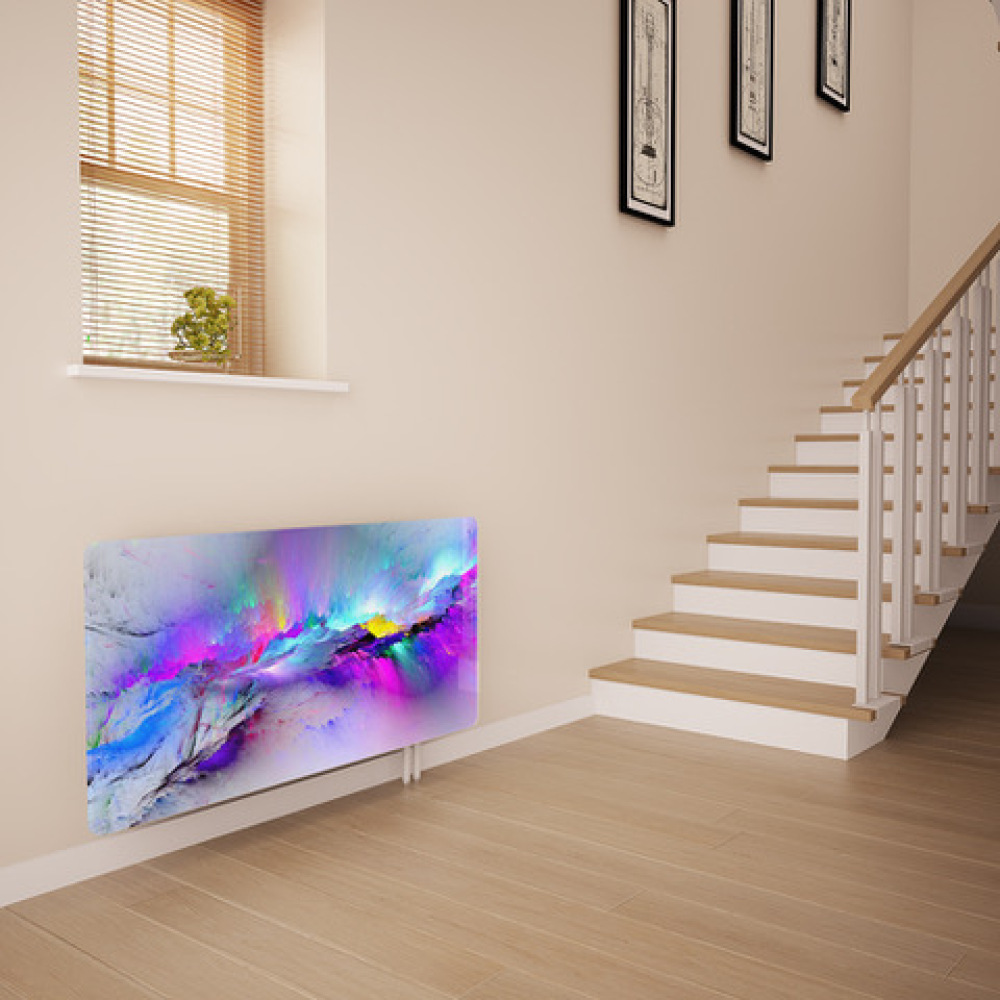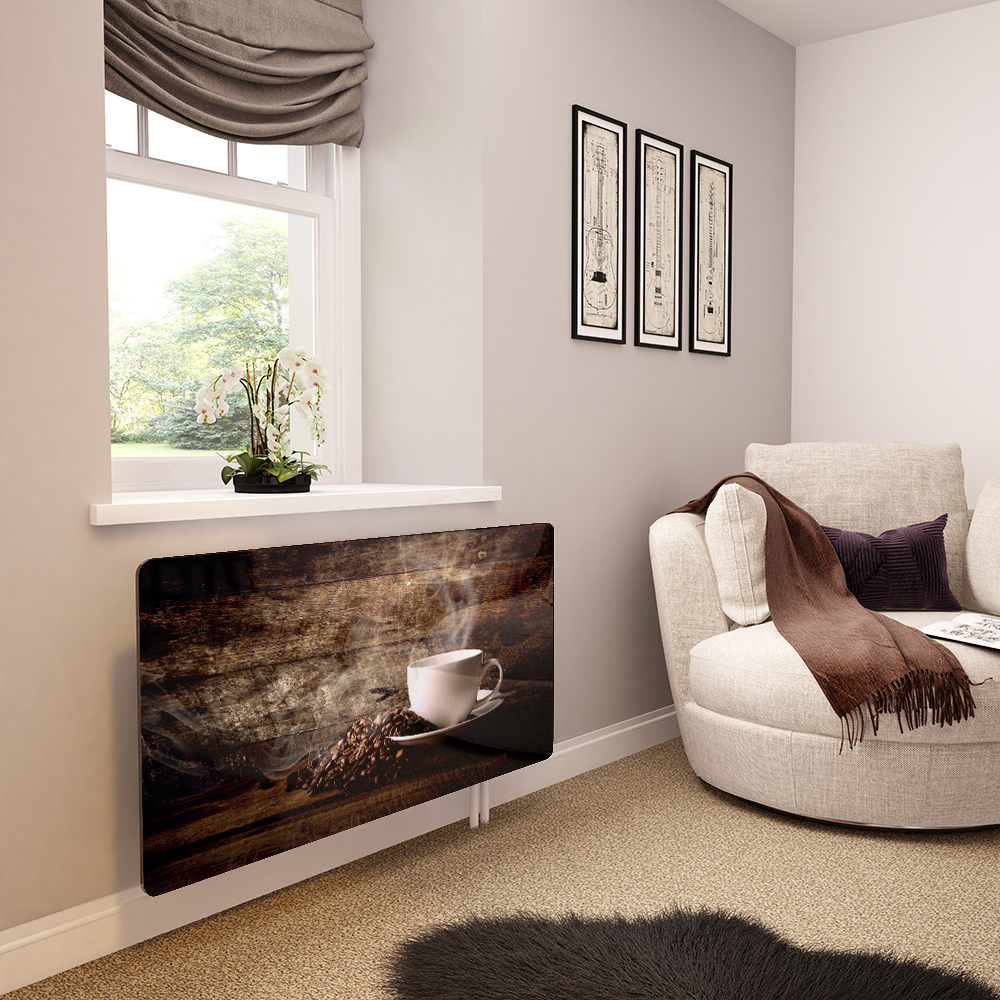Radiators are practical and functional, but they aren’t usually going to win any prizes for design or subtlety.
In the following article we are going to look at different ways to choose the correct radiator cover for your room. We’ll be looking at cabinets, toughened glass and any other variations we can think of.
How Do Radiators Work?
Many people think, probably due to the name, that radiators just radiate but they don’t.
While the front of the radiator does produce a small amount of heat, that kind of heating wouldn’t heat the room.
It’s actually the huge surface area of a radiator that heats up the air passing past it, that air rises and the room is heated with convection.
The majority of radiator heat actually comes from the top, hot air rises obviously, and this is why they are generally placed under windows, to take advantage of the cold air coming in.
What kinds of radiator covers are there?
Covers can be anything from a shelf above the radiator, to a cabinet surrounding the whole radiator, to a toughened glass panel that hangs from the front of the radiator.

Photo by Andrew Neel on Unsplash
The one you pick is entirely down to your taste and needs – maybe a glass one in the bathroom, wooden one in the living room, something practical in the kitchen .
How much room do I need for a radiator cover?
This is a common question and one that is both easy and hard to answer.
The easy answer is ‘That depends what room you’re in, what space you have around the radiator how your interior design ideas are shaping up ‘.
But, that’s not really the answer you need.
If you are using a wood cabinet style radiator cover there is a danger you could burn the underside of the top.
So it’s best to make sure that there is at least 10cm between the cabinet and the radiator so the heat can escape and you don’t damage the wood inside.
A ‘hanging’ toughened glass radiator cover just fits on the front of the radiator so that would take up less room – but you will need to make sure that you order a size that covers all the pipes and stuff you need to hide.
Why Use a Radiator Cover?
First and foremost the decision to have a radiator cover is generally an aesthetic decision but there are a few other reasons that a cover can be handy.
Here are a few:
- Some heating systems can make radiators very hot. A cover will keep tiny fingers and other burnable items away from danger.
- A radiator cover will protect the radiator from scuffs and damage.
- Radiator covers are cheaper and easier to replace than radiators.
- You can change your color scheme much easier.
Does a Radiator Cover Affect Heat Output?
Covering your radiator up will obviously block a little bit of heat.
But, as mentioned earlier, the room a radiator is heating is heated via convection, rather than radiation. So make sure that your radiator cover has plenty of ventilation openings on the top, bottom and sides to make the room feel warm.
Or use a cover that doesn’t block the sides and top, like a toughened glass ‘hanging’ cover.

Rainbow Rain Mountain Design
What material is best for a Radiator Cover?
- Metal or steel can be used for a modern radiator cover. If making a cover from a metal then it is important to ensure you have plenty of vents on the sides and top. Metal will also heat up so, while you get the same kind of heat, you lose some of the safety.
- Wood: Mostly hardwoods are best and they are easy to assemble The advantage here is the material will not heat up, though it could warp, but you will still need the vents on the side and back.
- Engineered wood: MDF. This can be used at a push, but it is more prone to damage from the haet and can look very tacky.
- Combo: Use wood or MDF to make the cover, but use metal for the grilles.
- Toughened Safety Glass. This would, generally, only cover the front of the radiator and will not heat up like metal.
DIY or shop bought?
If you have the skills then making your own Radiator Cover would be a great project and probably best to stick to hardwood cabinets.
However, we think that the professionals are the best bet here, especially if you are looking at something in toughened safety glass.
How To Get the Right Size Radiator Cover
When buying a ready-made or bespoke radiator cover, be sue to get advice from the manufacturer’s on what you need to measure.
But, this general guide should help you if that’s not possible:
Cabinet Style Radiator Covers
- The height of the radiator (from the floor) + 4 inches (for air space between the radiator and the cover) + the thickness of the cover material = the total height.
- The depth of the radiator + 2 inches (for air space) + the thickness of the cover material = the total depth. The width of the radiator + 2 times the thickness of the cover material = the total width.
- Measure the height of the radiator, from the floor, its depth and its width, including the pipes going to it.
Toughened Safety Glass Hanging Covers
- Measure the height of the radiator, and its width, including the pipes going to it.
- Add about 2.5cm to the measurement at the top and bottom, as the fittings are usually fitted 2.5cm from the top – this also means it’ll hang 2.5cm below the bottom of the radiator.
- The width will be fine as you have measured to the desired size.
Make sure the finished size fits without hitting obstructions.
Where is the best place to buy a radiator cover?
While we know there are lots of places to buy radiator covers it’s best to go with someone you can rely on, so always read reviews on Trust Pilot and other review sites.
For your toughened glass radiator covers, we would obviously recommend Premier Range.

White Cup and Coffee Beans design
